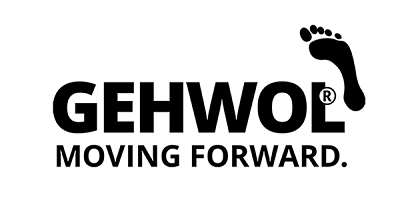Stresses in the practice and mobile foot care are high. A busy schedule with long periods of sitting in an awkward posture does not leave a lot of time for self-care in everyday life. There are three essential areas for providing relief in everyday life.
Joana Weingärtner, Head of GEHWOL Academy
The procedures of a treatment in a foot care practice usually follow a consistent pattern: welcoming the patient, getting them into the podiatrist chair, positioning them, and then treatment followed by departure. This means high levels of physical strain for many foot care professionals in everyday situations.
There are some simple tips you should follow to stay fit and avoid physical discomfort. Regular breaks are a must. Use this time for stretching and relaxation exercises. You can also take power naps by closing your eyes for 10 to 20 minutes. On a related note: Your eyes can use some relaxation too, especially since you are permanently focused during treatment. Optimized equipment for everyday work situations – both in the practice and on the road – makes an especially important contribution to relieving strain. One such example is the work chair in which we sit for most of the day. The Pending work chair, for example, has eight pendulums hidden inside. They pick up impulses from breathing and movement and carry them to the seat surface as resonant vibrations. The body has to continuously compensate for these vibrations. This trains the musculoskeletal system. Patient chairs like the Concept F3 have numerous ergonomic features, such as its wide range of settings to enable safe, comfortable and relaxed leg and foot positioning for customers. The lightweight mobile foot care case was designed so that all necessary materials, devices and instruments can be easily stowed away. To avoid cramping when working, handpieces and instruments should be comfortable to hold for periods of 8 to 10 hours. These examples show that you can provide relief not just with relaxation exercises, but also by using ergonomic equipment.
Exercises for more relaxed work
Rigid posture and strained finger positioning often leads to a lot of physical strain. Stay fit with exercises that you can incorporate into your everyday life at any time, while preventing the effects of continuous stress:
• Mobilizing the neck area: Move your left hand above your head to the right temple. Pull your head down to your left shoulder (and vice versa). Slide your right hand along your thigh towards your knee (with increasing intensity). Moving your shoulders and arms in a circle relieves strain in-between.
Our hands and fingers often stay in fixed positions, such as when doing delicate work or working
on the feet of a patient. With exercises, you can continue to work while staying relaxed:
• Loosening the wrists: Intertwine your fingers with each other, and draw a figure eight using your wrist.
• Stretching the fingers: First intertwine your fingers with each other (prayer position), and then stretch your palms out away from your body.
• Strengthening the muscles: Place the palm of your hand on a smooth surface and stretch your fingers upwards one by one. This is also helpful for purposeful coordination of individual muscle strands. It is easy to do when making a phone call, for instance.





